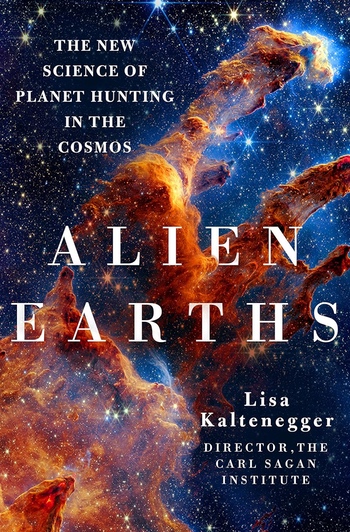Review: Alien Earthsby Jeff Foust
|
| “Asking the right questions is crucial in science because you have only one lifetime to figure things out,” she writes. But, she adds, “some of the answers are written in the night sky.” |
Since astronomers found the first exoplanets around a sunlike star nearly three decades ago, scientists have studied which ones could be habitable. That has coincided with much of the academic and professional career of Lisa Kaltenegger, the director of the Carl Sagan Institute to Search for Life in the Cosmos at Cornell University. In her new book Alien Earths, she describes the efforts to search for worlds beyond our solar system, including those that could support life.
The book is, in large part, a broad introduction to exoplanet science and astrobiology. Kaltenegger examines many of the key topics in those fields, from what it takes for a world to be habitable, or even inhabited, to the diversity of exoplanets discovered to date, many of which scientists once thought were impossible. For those who have been following the search for exoplanets and habitable worlds, much of this material will be familiar, but is presented well here. Interleaved in the book are anecdotes from her own career as well as other aspects of her life.
Kaltenegger has been studying the formation of exoplanets and ways to determine their habitability. This is an effort that transcends astronomy, as she makes clear in the book, as exoplanet science evolves into an interdisciplinary field that incorporates geology and biology. She describes that in passages in the book about doing lab research at Cornell to determine what the spectra of those worlds would be depending on their composition and presence of life. That includes, she noted, dealing with clashes in terminology, with words as simple as “metal” and “glass” meaning different things for astronomers versus geologists.
That interdisciplinary work, language difficulties aside, is critical to the future of the search for worlds beyond Earth that might host life. She now occupies the same office at Cornell as Carl Sagan, leading the institute named after him that brings together researchers from many fields on the key questions in astrobiology. “Asking the right questions is crucial in science because you have only one lifetime to figure things out,” she writes. But, she adds, “some of the answers are written in the night sky.”
Note: we are now moderating comments. There will be a delay in posting comments and no guarantee that all submitted comments will be posted.
